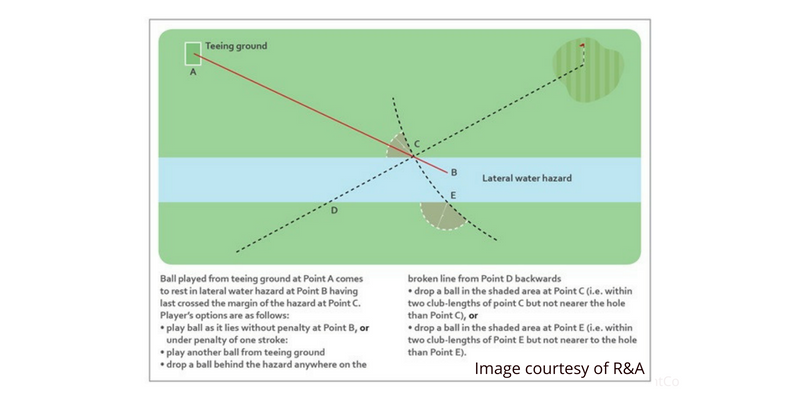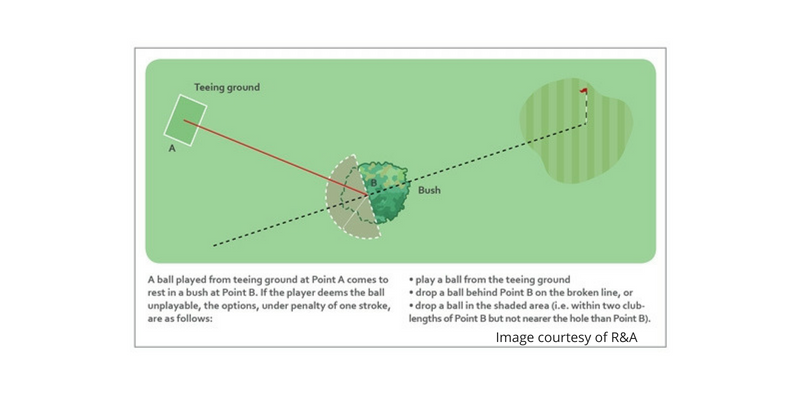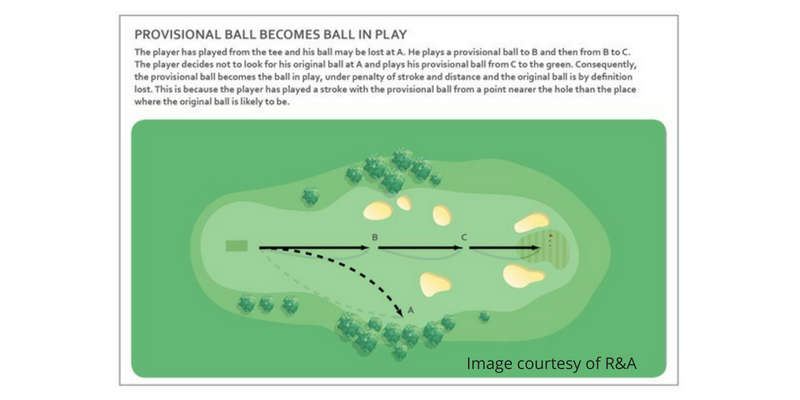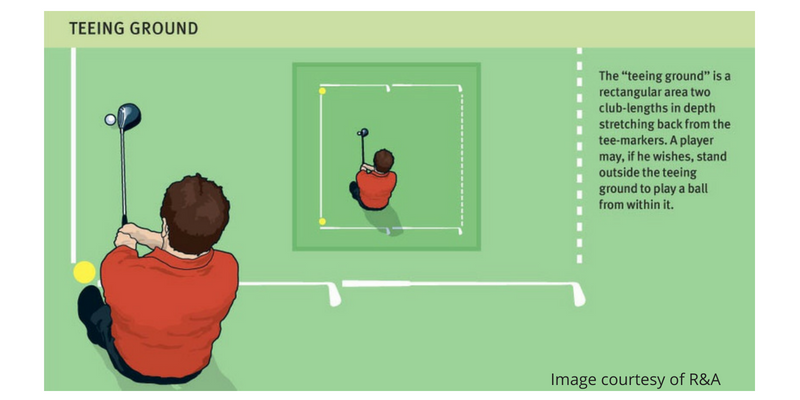
Let’s face it, learning the rules of golf is not always the most exciting topic. Thumbing through the USGA rulebook can be intimidating to high school golfers and coaches alike, resulting in many not understanding the basics of the rules. I want to discuss some of the most common rules and scenarios that golfers face and ways that you can approach each situation to eliminate taking a high number on a hole.
Lateral & Regular Water Hazards
So you’ve hit your ball into a water hazard. Now what? The first item you must look at is what type of water hazard is it? You can choose to play the play as it lies in the hazard under no penalty, or under the penalty of one stroke:
Regular Water Hazard(Yellow stakes or lines):
- Play a ball from where your last shot was played from, or
- Drop a ball any distance behind the water hazard line keeping a straight line between the hole, the point where the ball last crossed the margin of the water hazard and the spot on which the ball is dropped.
Lateral Water Hazard (Red stakes or lines):
You may also also use the options above for when you are in a lateral water hazard. In addition, under penalty of one stroke, you may drop within two club-lengths of the line of the hazard not nearer the hole:
- the point where the ball last crossed the margin of the hazard, or
- a point on the opposite side of the hazard equidistant (same distance) to the hole from the point where the ball last crossed the margin.
Let’s take a look at what this looks like visually:

Taking an unplayable lie
If your ball comes to rest in a water hazard and you don’t wish to play it, you have to use the above water hazard rules. However, anywhere else on the golf course, if you believe your ball is unplayable, under a one stroke penalty, you may:
- play a ball from where your last shot was played, or
- drop a ball any distance behind the point where the ball lay keeping a straight line between the hole, the point where the ball lay and the spot on which the ball is dropped, or
- drop a ball within two club-lengths of where the ball lay not nearer the hole
If your ball is in a bunker you may use the same rules above, except that if you are dropping back on a line or within two club-lengths, you must drop a ball in the bunker. Ball lost or out of bounds: Hitting a provisional shot
Ball lost or out of bounds: Hitting a provisional shot
If you hit a golf shot that you believe may be lost or out of bounds, you may always announce to your playing partners that you are going to play a provisional, under no penalty. This not only is a smart move, but it will save you walking back to where you played your last shot if your ball is lost. Keep in mind, You must announce that it is a provisional ball and play it before you go forward to search for the original ball.
You are allowed 5 minutes to search for a ball. If it is not found within 5 minutes it is lost.
If the original ball is lost (other than in a water hazard) or out of bounds, you must continue with the provisional ball, under penalty of one stroke. If the original ball is found in bounds on the golf course within 5 minutes, you must continue play of the hole with it, and must stop playing the provisional ball.
What if you hit a tee shot towards out of bounds and a hazard? Can you still play a provisional?

Using the entire teeing ground
When teeing off on a hole, keep in mind that the teeing ground is not only the small strip of grass between the two tee markers. Ofcourse, you cannot hit your tee shot from in front of the markers, but you can play your tee shot from up to two club lengths behind the front line of the tee markers. (This can be very helpful if you are between clubs on a par 3).

Hopefully these above rules discussions and scenarios will be helpful to you and your team this season when you run into these issues and may even save you a few strokes! If you are interested in learning more about the rules of golf and testing your knowledge, I would recommend checking out the USGA Rules Education section where they have various workshops, quizzes and videos.